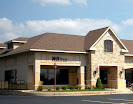Vacant stores, offices and commercial buildings can be found across the capital city, shuttered and abandoned for one reason or another.
Some have sat empty for years, while grass and weeds grow tall around the buildings. Paint falls off. Trash accumulates. Sometimes graffiti can be spotted on sides of buildings.
Online readers identified a number of deteriorating eyesores in Springfield — from the old Kmart on MacArthur Boulevard to the former Kovski Chiropractic Clinic at Fourth Street and South Grand Avenue.
With the economy forcing even more businesses across the country to close their doors, Springfield faces the question: What can be done to keep empty properties cleaned up?
City’s tools
The city can try to force property owners to clean up buildings by citing them for code violations.
The most commonly cited violations, according to John Sadowski, the city’s plans examiner and building department manager, include broken windows, deteriorating paint, gutters that are falling off and leaking roofs.
If two or more code violations are found at a vacant property, the city can require the building to be registered. Doing so requires a permit, which initially costs $100 per building.
The initial registration fee gives the owner six months to correct the violations, Sadowski said, before the fee increases to $250 for the next three months.
Since January, the city has issued 338 such permits for residential and commercial buildings. The city’s software couldn’t break down how many were commercial and how many residential, but Sadowski said “many, many more” residential properties have been issued permits than commercial.
Sadowski, who has been with the city for 13 years, said that, by the end of the year, he expects Springfield to have issued twice the number of registration permits as last year. In 2008, the city issued twice as many as 2007.
“That’s because we’re spending more time requiring owners to register for the building because of more and more complaints,” he said.
Inspectors
Code violations generally are reported by either passers-by who complain to the city or an inspector.
The building department, which handles commercial properties, has four building inspectors, Sadowski said. The city’s financial woes haven’t reduced the number of inspectors, he said.
Ernie Slottag, the city’s spokesman, said the city can’t enter a commercial building without the owners’ permission, although, occasionally, the city is notified about exterior building problems that can be safety hazards for sidewalks or streets.
In those cases, Slottag said, the city barricades the area to prevent injury to property and passers-by.
But getting a problem property fixed up can take a long time, he said.
“We respond quickly,” Sadowski said. “If we get a complaint, we’ll send an inspector the next day.”
The city then has to do research to find the owner and send a letter, he said.
“In most cases, that letter is ignored, and then we have to send the case to our legal department and have to bring the case to administrative court,” he said. “Only then are many building owners convinced they have to pay the registration fee.”
What you had to say
We asked readers on sj-r.com and on visitors to sj-r.com’s Facebook page for help identifying vacant buildings that appear to be deteriorating. Here are some of your submissions:
* The Warehouse, South First Street
* The former Kmart building, MacArthur Boulevard
* Former Damon’s restaurant, Parkway Pointe
* The old Esquire Theatre, MacArthur Boulevard and South Grand Avenue
* Former Kovski Chiropractic, Fourth Street and South Grand Avenue
By DEANA POOLE
THE STATE JOURNAL-REGISTER
The Ultimate Guide to Buying a Home in Nashville
8 months ago

No comments:
Post a Comment